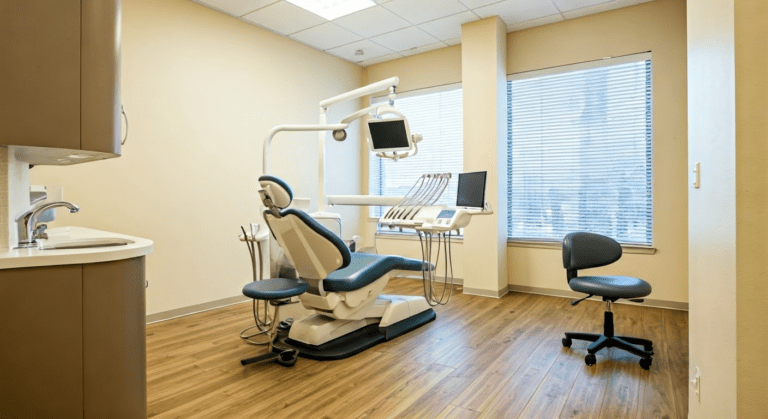Learn How Can Practice Management Tools Improve Patient Satisfaction
Patient satisfaction isn't just a "nice-to-have"—it's the heartbeat of any successful dental practice. But keeping patients happy goes beyond friendly staff and clean waiting rooms. It's about how smoothly everything runs behind the scenes. Are appointments easy to book? Are follow-ups timely? Are patients kept in the loop? That's where practice management tools step in.
These tools aren't just digital software add-ons—they're game-changers for building trust and delivering continuity of care. Whether you run a solo practice or manage multiple locations, having the right healthcare systems in place can reduce no-shows, speed up workflows, and ultimately create a more personalized, stress-free, and positive patient experience of care.
What Exactly Is a Practice Management System (PMS)?
Think of a Practice Management System (PMS) as the command center for your dental or medical practice. It's a software tool built to simplify your day-to-day operations, handling everything from scheduling and billing to insurance processing and patient communications.
Instead of juggling spreadsheets, sticky notes, and endless paperwork, a good PMS brings it all together in one place. It's designed to help your team save time, reduce medical errors, and focus more on what truly matters: delivering great primary care.
PMS vs. EMR: What's the Difference?
It's easy to confuse PMS and EMR—they sound similar but serve very different purposes. EMR (Electronic Medical Records) is all about the clinical side of things. It stores patient histories, diagnoses, prescriptions, and lab results—basically, everything a provider needs to treat the patient.
Conversely, PMS takes care of the business side: scheduling healthcare appointments, managing billing, processing insurance claims, and organizing admin tasks. They don't compete—they complement. When used together, they create a seamless experience for your staff and patients.
How Practice Management Tools Enhance Patient Experience?

If you're wondering how to improve patient satisfaction, know that a smooth, stress-free visit can make all the difference in how patients perceive your dental practice—and that's where Practice Management Tools (PMTs) come in. These tools do more than manage schedules and billing; they directly impact how patients feel from when they book an appointment to when they walk out your door. By simplifying communication, reducing waiting times, and giving patients more control, PMTs help turn routine visits into positive experiences.
1. Streamlining Appointment Scheduling
Let's be honest—no one likes calling a clinic multiple times to book an appointment. PMTs make the process fast and frustration-free. With a straightforward, easy-to-use calendar interface, your staff can see openings at a glance and slot patients in without playing phone tag. It reduces paperwork, lowers the chances of double-booking, and helps patients stick to routine care with helpful reminders. When scheduling is this smooth, your front desk breathes more straightforwardly, and your patients walk in already impressed.
2. Reducing Patient Wait Time
Long waits are a common pain point—but they don't have to be. PMTs help your practice manage time more efficiently by analyzing patterns in appointment traffic and streamlining scheduling workflows. That means fewer bottlenecks during peak hours and a more predictable daily flow. Patients appreciate being seen in less time, and your team isn't scrambling to keep up. Less stress on both ends translates to a better visit every time.
3. Ensuring Accurate and Quick Access to Patient Records
No one wants to explain their health history from scratch at every visit. PMTs ensure patient records are up-to-date, accurate, and accessible in seconds. This allows providers to make faster, more informed decisions without digging through paper files. Whether it's medication history or recent test results, having everything in one place means no missed details—and a smoother, more confident treatment experience for your patients.
4. Automating and Personalizing Patient Communication
How many missed appointments could be avoided with a simple reminder? PMTs keep communication flowing without adding to your team's workload. From appointment confirmations to refill alerts and follow-up check-ins, patients stay in the loop automatically. Even better, messaging can be tailored based on the patient's history or condition. These personal touches make patients feel seen and cared for—not just like another name in the system.
5. Facilitating Better Data Management
Data is the backbone of good decision-making, and PMTs make managing it far more manageable. Each patient's useful information is centralized and stored securely but still accessible immediately. No more rifling through files or worrying about lost paperwork. With organized digital records, your team can respond faster, reduce errors, and provide more accurate, confident healthcare quality.
6. Enhancing Operational Efficiency
Busy clinics need innovative tools to stay on track. PMTs automate time-consuming tasks like appointment scheduling, billing, and claims submissions. They also offer helpful reporting tools to show trends in patient visits or financial performance, helping you plan. It's about giving your staff the time and clarity to focus on delivering quality care instead of chasing admin tasks.
7. Improving the Accuracy of Billing and Coding
Billing errors can be costly—and frustrating for your team and your patients. PMTs help minimize these mistakes by keeping billing codes current and automatically checking claims before submission. That means fewer denials, faster payments, and less back-and-forth with insurance companies. When billing is smooth and transparent, it builds trust and prevents surprises that could harm the patient relationship.
8. Empowering Patients with Access to Their Medical Information
Having easy access to personal health records can be incredibly empowering. Whether it's lab results, prescribed medications, or clear instructions, reviewing this info anytime helps patients feel informed and in control. It encourages better self-care and opens the door to more productive provider conversations. Informed patients are more engaged, satisfied, and likely to follow through on their treatment plans.
Turn Patient Insights Into Exceptional Care with Practice by Numbers
Patient satisfaction isn't just about friendly smiles and on-time appointments—it's about delivering a seamless, thoughtful experience from start to finish. Practice by Numbers makes that possible by giving your team the tools to understand and respond to patient needs genuinely. From automated follow-ups and appointment reminders to real-time tracking of reappointment rates and treatment acceptance, PbN helps you stay ahead of what your patients expect—and what keeps them coming back.
Instead of juggling scattered systems or missing out on key patient feedback, you get one intuitive platform that brings it all together. Want to reduce long wait times? Improve front-desk responsiveness? Identify gaps in recall? PbN's smart analytics and task automation help you spot what's working and what's not so your team can act fast, provide personalized care, and create an experience that feels effortless and genuinely patient-centered. Contact us at 866-216-8416 to book a demo and feel the difference!
Conclusion
True patient satisfaction doesn't come from fancy tech or flashy tools. Rather, it comes from knowing the right ways to improve patient satisfaction by caring for the patient at every step. Practice Management Systems don't just organize tasks; they eliminate the friction patients often feel when dealing with delays, miscommunication, or billing confusion.
These systems create structure behind the scenes, allowing care teams to be more present, accurate, and human. The result?
Patients walk away feeling less like numbers and more like people whose time and health matter. And in a world where experiences shape loyalty, that makes all the difference.




